The making of Unpacking: Developer Witch Beam on bringing the moving indie hit to life
Edge speaks to developer Witch Beam to explore the story behind Unpacking
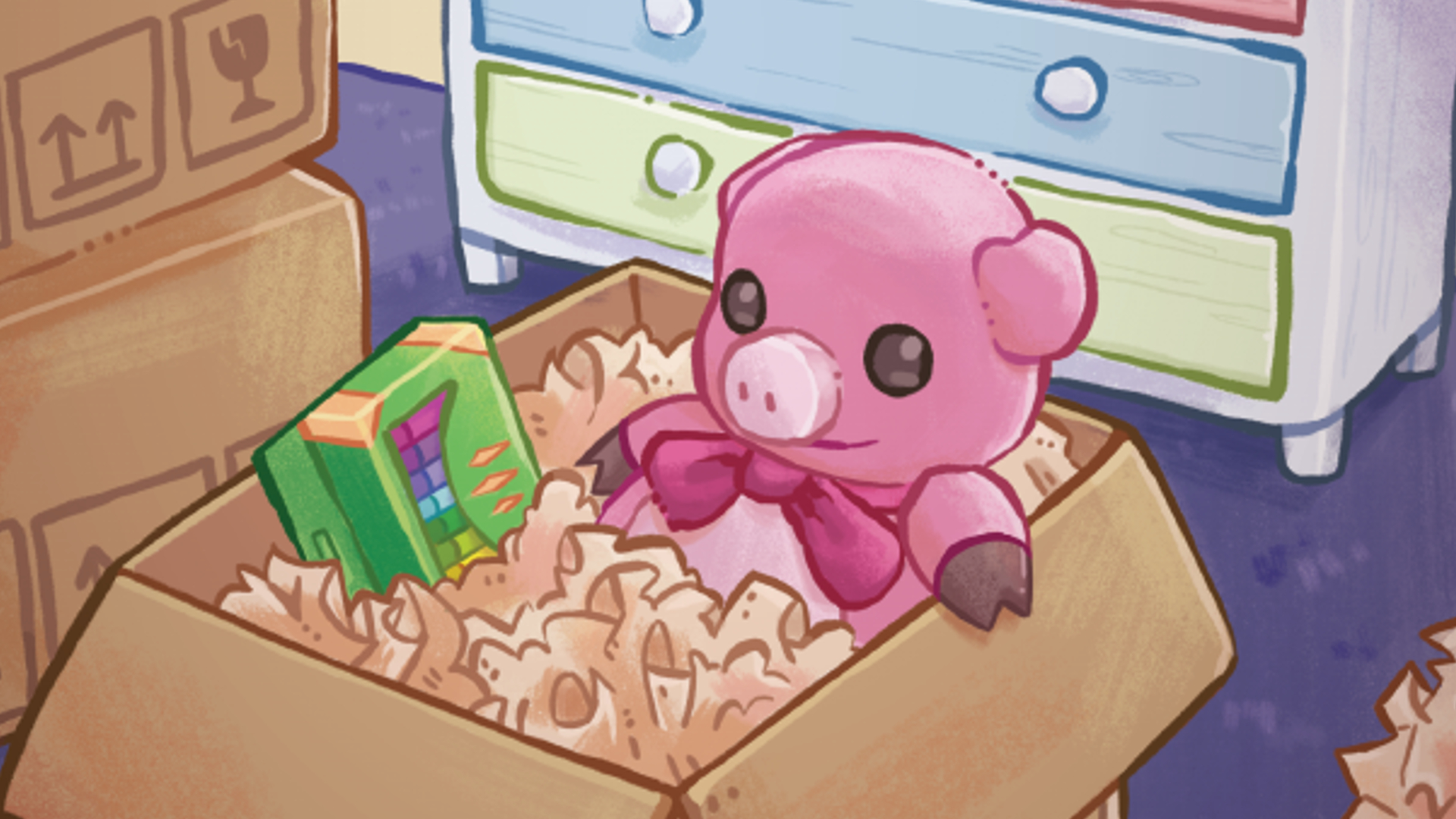
When we invite Wren Brier and Tim Dawson to talk us through the origins of Witch Beam's narrative tidy-'em-up, they tell us how it all started in the kitchen. You might know that already - this, after all, was how their game went viral. In 2018, fresh from accelerator program Stugan, the pair posted a GIF of the one level they'd built so far: a short time-lapse replay of various items (mugs, plates, glasses, tea towels, a kettle, a microwave, a cookie jar) being taken from cardboard boxes and placed neatly on marble worktops and wooden shelves.
The response was enough to convince them that their apparently niche project could "appeal to a ton of people," Brier says. Just as importantly, it brought publishers knocking at their door – "or rather my Twitter DMs," she laughs - one of them being Humble, which ended up publishing the game. Yet the tale of Unpacking begins earlier than that, when the burgeoning relationship between these two developers saw them move in together.
As Dawson began to unbox his belongings, Brier noticed the process was oddly game-like."We're both game developers, so we just started riffing off that," he explains. "Items come out, you match them together, you finish one box and start on the next – you're kind of unlocking it. We were seeing things that felt like, 'Yeah, there's a structure to this', like the way you can use a box temporarily to put an item on, but then have to take it off later to open it."
In the kitchen
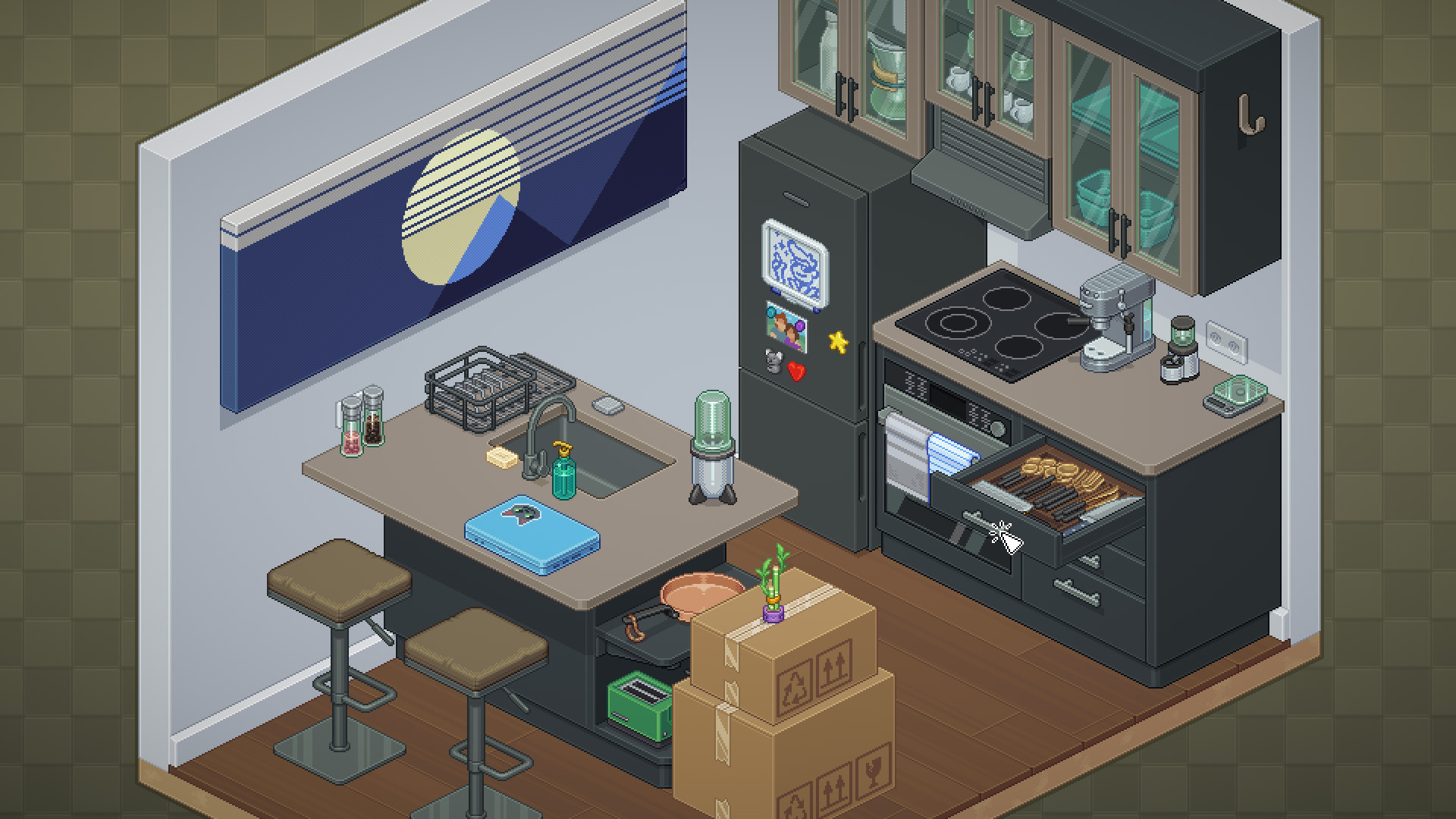
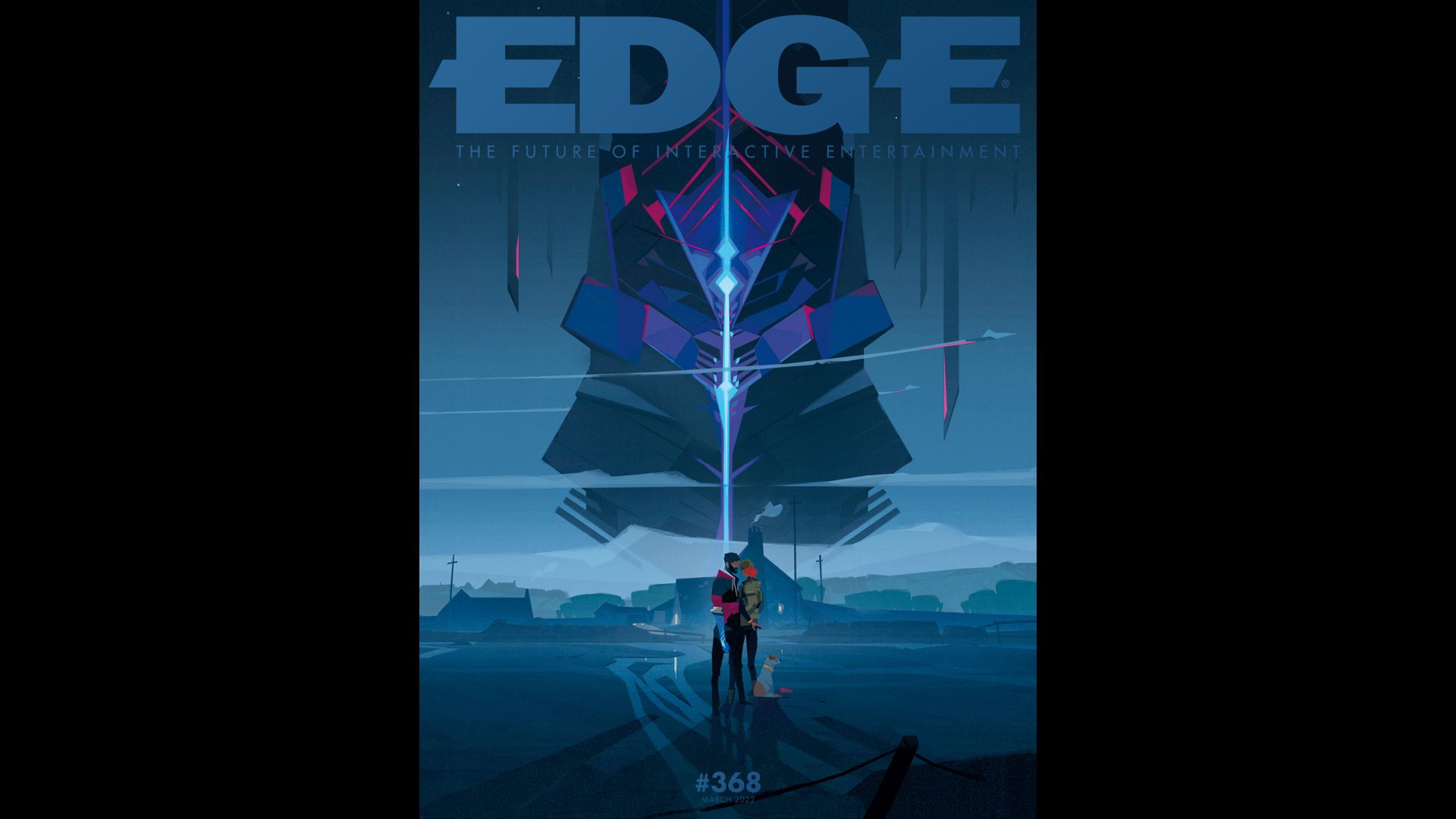
This feature originally appeared in Edge magazine. For more in-depth features interviews delivered to your door or digital device, subscribe to Edge magazine.
It was Dawson who first began to take the idea more seriously, asking questions and "prodding at it", in his words, until Brier understood that this wasn't merely a joke. Having always wanted to pitch for Stugan, the pair realised they wouldn't likely get a better opportunity. "Wren didn’t think we had much chance," Dawson says. "No, no!" she protests. "It wasn't that, I just [thought] it was a long shot," and he agrees. Even so, with such a strong original idea in mind, the pair decided to apply.
First, of course, they needed to assemble a prototype. But where to start? "We wanted to test out the mechanics before we tested out the storytelling," Brier begins. "We wanted to check if it was even fun to unpack things and organise them around a room, and kind of prove out the mechanics and get our tech started - so, like, the whole grid system and item placement and item creation and environment creation."
They needed a room for which narrative elements felt unnecessary: a utilitarian space that could hold plenty of familiar items. A kitchen was the natural choice, not least since Brier and Dawson could use their own as reference. There was a practical aspect to it, too. "Cups and plates were good, because you can just make one plate and suddenly you’ve got four plates because you can just duplicate," Dawson says. The pair arrived at Stugan in Sweden with around a dozen items (there’s a brief debate between the two over whether the juicer or the microwave was initially present) in their virtual kitchen. Two months later, they emerged from Stugan’s cabin with around 70. Then came that pivotal GIF.
By that stage, Unpacking's narrative arc was, broadly speaking, already in place, with seven of the final game's eight stages worked out. The original plan, Dawson says, was to spend those two months in Stugan working up three or four of those levels. Instead, the whole time was spent refining the kitchen.
Weekly digests, tales from the communities you love, and more
As many of us can attest, any kind of home improvement tends to take a good deal longer than planned, yet here it was a conscious choice and, Brier says, ultimately the right one. "We went from wanting to make half the game to a rough point to doing one room to vertical-slice level. And that vertical slice ended up being our first demo, which was something we were able to send to publishers and to show at events - it was the one we showed at Day Of The Devs.”
It also enabled Brier to calculate roughly how long it might take to make the art for the full game. "I think I made it two-and-a-half years to do just the art," she says. "And that’s not my only job on the project.” Given that the eight moves for Unpacking's protagonist span 35 rooms, and more than a thousand items, it's little wonder the release date slipped - first from mid to late 2020, then into early 2021, and finally to November.
"When we made the first kitchen, it was very much like, 'What can we stuff in here?'" Brier says. But once the pair started on the story proper, it made more sense to work sequentially, beginning with the main character's childhood bedroom. "At the start, it was just me and Tim making a list of what items should be there. We still did that for the second room but by the time we got to the third level, at that point, we'd hired a narrative designer to assist us. And she ended up helping us on levels three, four and five."
Telling a story

Then came biographies for the characters, and a step-by-step plan of the protagonist's life. A series of questions was asked for each stage, as Brier outlines: "Where she’s at? What's her mental state? Is she happy or not? What are her relationships like? Where is her career at? What’s her health like?" Dawson went so far as to create graphs of how these various elements intersected, and built "sprawling spreadsheets" of all items in each level, the pair mapping out which would stay with her and which would be left behind as they simultaneously worked on the various domestic spaces.
"If it seemed like there were too many items for an environment, we'd take some out; if there were not enough, we'd add more," Brier says. "Usually, we'd start by going a little overboard on purpose, because it's always easier to cut back than to go, 'Ah, what do we add now?'"
Items were given their own specific story: at each juncture, the developers considered the reason why Unpacking's unnamed lead had boxed them up and brought them to her new home. For many, Brier and Dawson drew inspiration from their own belongings: a football trophy, for instance, was based on a prize Dawson had received as a youngster. "I remember I had a trophy one time that was like 'Best Improvement' or something. It was not a particularly prestigious award, but it was the bigger trophy. And so I had three little trophies and this slightly bigger one - and as a little kid that felt meaningful," he tells us.
"Then we’ve got a soccer ball, which shows that she plays a sport in some way. She's not necessarily a professional player, but it shows that she's participating in something and this is like a treasure [to her]. That was an example of something where I was connecting back to how I felt about a trophy, but it's for the purpose of the character. It's not like we're just putting items into the game - everything's there for a purpose"
The pair managed to avoid a lot of waste by discarding items at the stage where they were just text or placeholder blocks in a grid. But inevitably, the character’s journey means that some of those treasures would be left behind - and Brier and Dawson found themselves growing emotionally attached to some of them. "We knew that each level was going to have fewer plush toys," Dawson explains. "From the kid’s room, choosing which toys didn't come along was a little bit kind of sad, because they're all lovely. The duck with the sunglasses and stuff like that."
Narratively, this made sense - beloved childhood books were never going to accompany our lead to university - but the two would try to find arguments for holding onto things for sentimental value, if nothing else. "Sometimes we'd be like, 'Well, can't this come along? Wouldn't she have kept this? It feels important to me, so I think it’s important to her'."
"Heartbreak to hope"
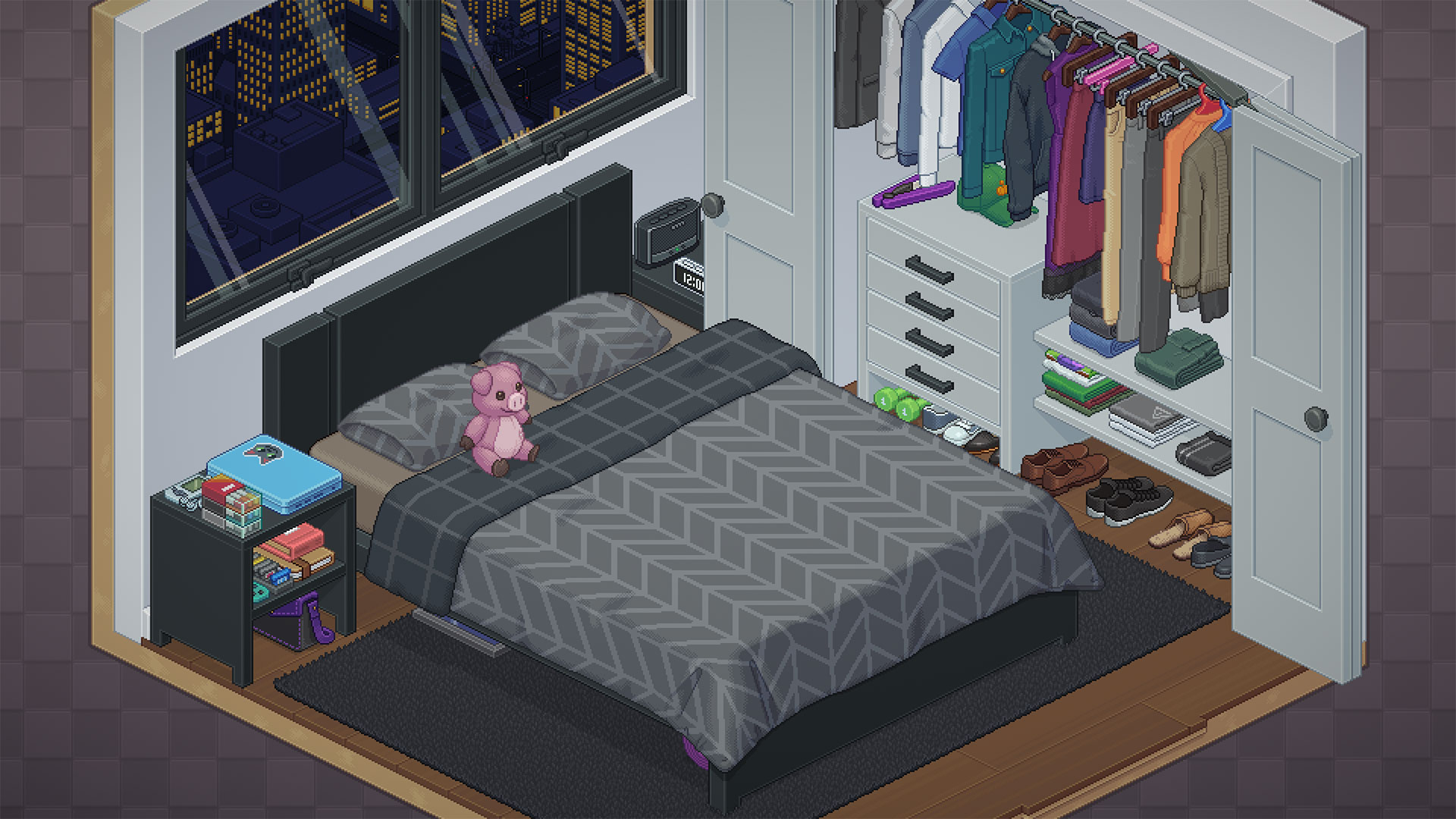

Save up to 52% on gaming magazine subscriptions for the perfect holiday gift
Not every item in Unpacking is equally valuable, but two in particular demonstrate the level of thought and care invested in the game's narrative design, the limitations imposed on their placement communicating something significant about our unseen lead. The first occurs when she moves into the plush apartment of a new partner, and must try to fit her possessions around his. Even as you start, it's notable that some haven't made the trip, but the most affecting moment comes towards the end, as you struggle to find a home for her framed diploma only to realise there's no room and it must be stowed out of sight.
Originally, Brier says, the plan was to have no space for the character's drawings to be hung up on the wall, "but once we’d made the diploma item, it felt obvious that that should be the one". The reaction to this level, Dawson says, has been "interesting" - which is quite the understatement. "I definitely wanted to tread a line where you come into that level, and at first you're kind of impressed. You think, 'This guy's got his life sorted out - look how nice everything is'. And it's only after a little bit that you start feeling that actually, maybe there’s a bit of a veneer here. That maybe this isn't a great fit; he doesn't seem to have interests that align with hers."
And that's not the only problem, Brier adds: "I've seen players going, 'Wait, I don't have an office. I don't have a desk, where can I draw? Where can I put my art things?' And they really struggle with that." The most significant narrative change came immediately after that stage.
"The way the original story went was: you break up with the boyfriend and move out on your own to an apartment that's a little too big for you," Brier says. You would begin unpacking at night, while it's raining ("You know, really lay it on thick," she grins), and then by the time you're finished it's morning and the sun is out, and with all your items in place the house has come to feel like a home.
Witch Beam ultimately felt this "journey from heartbreak to hope", as Brier puts it, was too much for a single level, when every other stage had been designed to hit a single emotional beat. "But the bigger thing was that it made that level mostly a sad level. And then the next level is a happy level and you have a new partner. We didn't want it to feel like she’s only happy [with] a partner, like she's got this codependent nature. No, the reason she's happy is because things in general are going well in her life. She's got her independence." Dawson suggested a stopgap ("A smaller, shittier apartment") before her next long-term move. "But then I was like, 'What if she moves back in with her parents?'" Brier says. "And then we high-fived!"
Moments of creative synergy such as this came often during development, Brier says – in this instance allowing the player to experience a kind of vicarious nostalgia. "We get to revisit [a place] that already means something to the player," Dawson says. "Going back to the parents' house is actually more meaningful." And it also illustrates a gap in her life that we otherwise wouldn't have seen - her early teens.
"It's like 'Oh, this is what she's been up to. I guess she learned karate and kind of dropped off from soccer and she got into these bands and is listening to what sounds like Avril Lavigne,” Brier adds. “Yeah, my favourite detail was that there’s another soccer trophy, but it’s much smaller, and less impressive looking. It’s like, ‘Hmm, did she peak as a ten-year-old?’”
We’ll admit to that particular piece of visual storytelling passing us by. But the focus on show over tell, the pair say, was always about trusting the player. In many cases, the process itself helps make items more memorable: rather than simply studying your environment, you're forced to consider each item and its place in the world in the process of unboxing it and putting it away.
"It's a bit like some of those memory tricks where you have to come up with a story in your head to [remember] an item," Dawson says. Where they turn up is a factor, too: in one memorable instance, a purple cup ends up chipped and is repurposed by its owner as a toothbrush holder.
Unboxing design
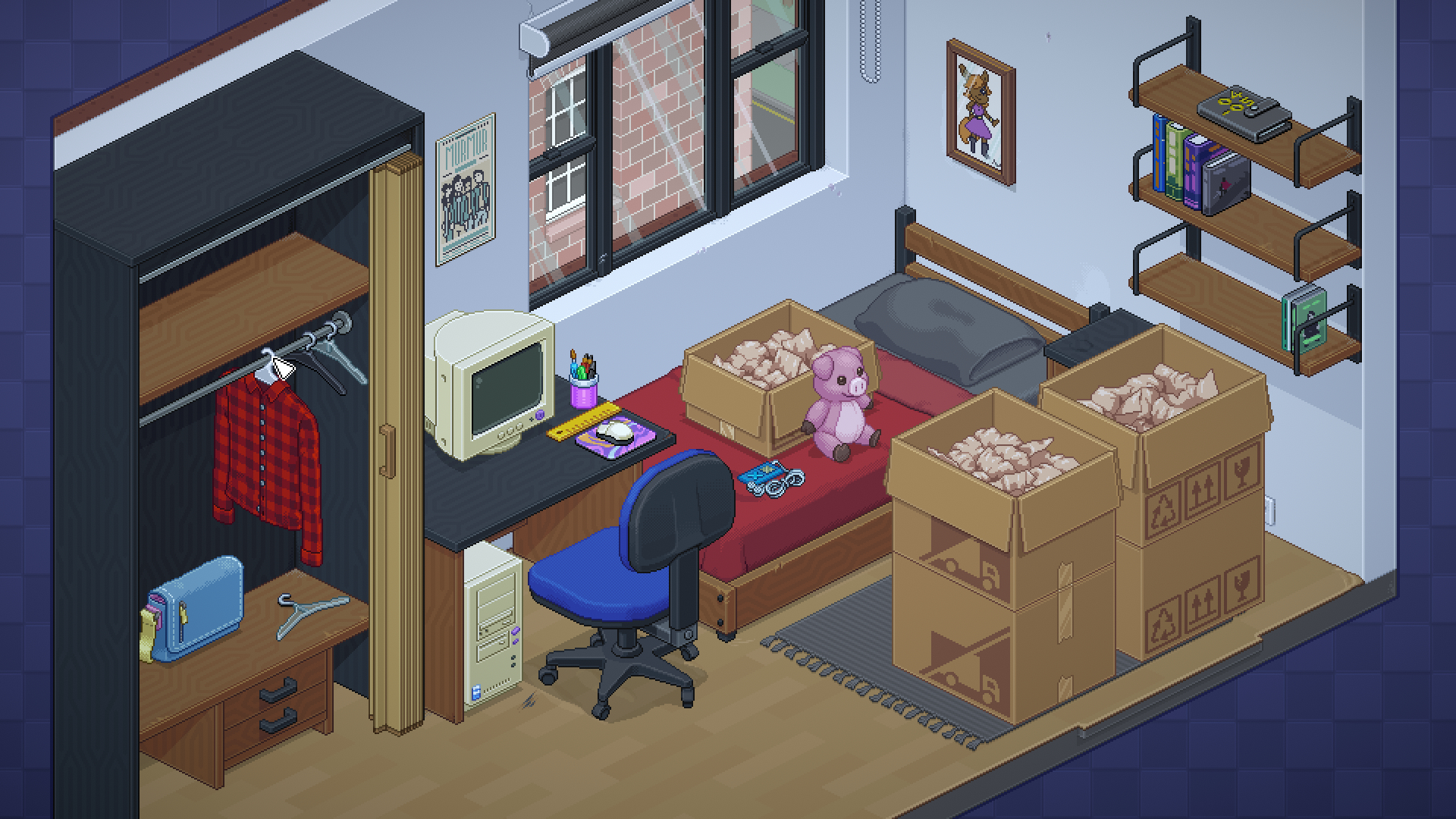
As much as Brier and Dawson hoped players would engage with the story, they recognised the need to cater to players who might not be quite so invested; the game still had to be fundamentally satisfying to play. Unpacking's smart, unintrusive interface is obviously a significant part of that. Tutorialising item rotation was the first step, Brier says, since it was one thing that testers weren't necessarily able to easily intuit. Dawson adds that Witch Beam aimed to introduce elements gradually, so as not to overwhelm players.
"Something I was really happy with was that when you start playing the first level, you have one menu icon, up in the top left, and you have the zoom buttons on the top right. And that’s it. That's all you get," he says. "Then you unpack the camera, and unlock photo mode. So now you've got two icons, but you didn't start with two because that would have been more confusing than one. And then, when you finish the level, you get the star icon."
By the third level, you have a floor plan - but only because, as Brier explains, it's the first level large enough to require one. This wasn't simply about unlocking more functionality, then. "It was more just this kind of onboarding [process] that lets you concentrate on taking stuff out of boxes and placing them, and we’re leading you into that slightly bigger space very organically without having to put up a tutorial box," Dawson adds.
Still, while the initial aim was to keep the interface as minimal as possible, it continued to grow and develop as new features were introduced. "We wanted a lot of the UI to be skeuomorphic," Brier says, "to feel like things that you’d have around the house as you’re unpacking or packing." Hence, the pause menu became a to-do list of sorts, while the file-select screen evolved into a trio of photo albums. “We came up with the album metaphor early on," Brier says. "It changed from album to scrapbook, back to album. But we wanted the progression to be through these snapshots, because it felt like the game is made of snapshots. So the metaphor needed to be snapshots [of a life]."
The photo displayed in that in-game album is taken in the room in which you finish unpacking. In another delightful touch, the accompanying caption reflects that. “A design principle I really like is the idea of, whatever the player chooses to do, we're going to acknowledge that. Like, we're not going to suggest it's weird that they did that," Dawson says. "Or ignore it and feel like you made an invalid choice,” Brier adds.
That meant simply rolling with it if the player happened to choose to finish in the smallest bathroom, in other words. "Maybe they’re just really excited to have a second toilet,” Brier says. "It’s just like 'bonus toilet!' That's the line there.” As gratifying a way to close out each move as this is, better still are the exportable GIFs that mimic the one that first brought Unpacking so much attention, showing a sped-up replay of how you made a room your own.
In the details

Yet this was only implemented after a suggestion from Witch Beam co-founder Sanatana Mishra. "We were like, 'Yeah, that's a pretty good idea'. But it was actually horribly complicated," Brier laughs. "It was a constant source of bugs right up until release," Dawson adds - though given the result has allowed creative players to imagine their own little micro-narratives (one enterprising individual made an animation of a soft-toy football match), he admits the constant testing was worth it.
This did, however, introduce one 11th-hour headache, as Brier realised one drawback to the game's unobtrusive interface. "People are going to miss this," she insisted. "We need to tutorialise it in some small way. And Tim was like, 'We are literally days from release, what are you doing, Wren?'" Her persistence paid off: when you finish a level, the replay button will flash until the player clicks it. "That’s the whole tutorialisation. But when I see in people's streams that it catches their eye, I'm so happy that we put that in."
If this feels like the gamedev equivalent of realising you've forgotten something during a move - when you find yourself stuffing an item into an already-groaning box at the last minute - that's something else Witch Beam has thought of. Sometimes you will find an object that has clearly been belatedly shoved wherever it fits, even if that means an incongruous discovery upon unpacking. It's one more story element that some players might miss - but Brier says that doesn’t matter too much.
“You won't have quite as deep an experience as someone who's being careful and paying a lot of attention. But your progression isn't blocked." Except, that is, for a couple of moments. There's the aforementioned diploma, of course, but also a photograph of the main character and her ex that must be tucked away in a drawer to avoid causing further pain, rather than displayed on the pinboard in her childhood bedroom. That particular item, they say, was the best way to spot who had been paying attention to the story: several players even went as far as to lodge bug reports, claiming they couldn't find a place for it. "It's like, 'Look closer at the picture,'" Dawson laughs.
Finding meaning
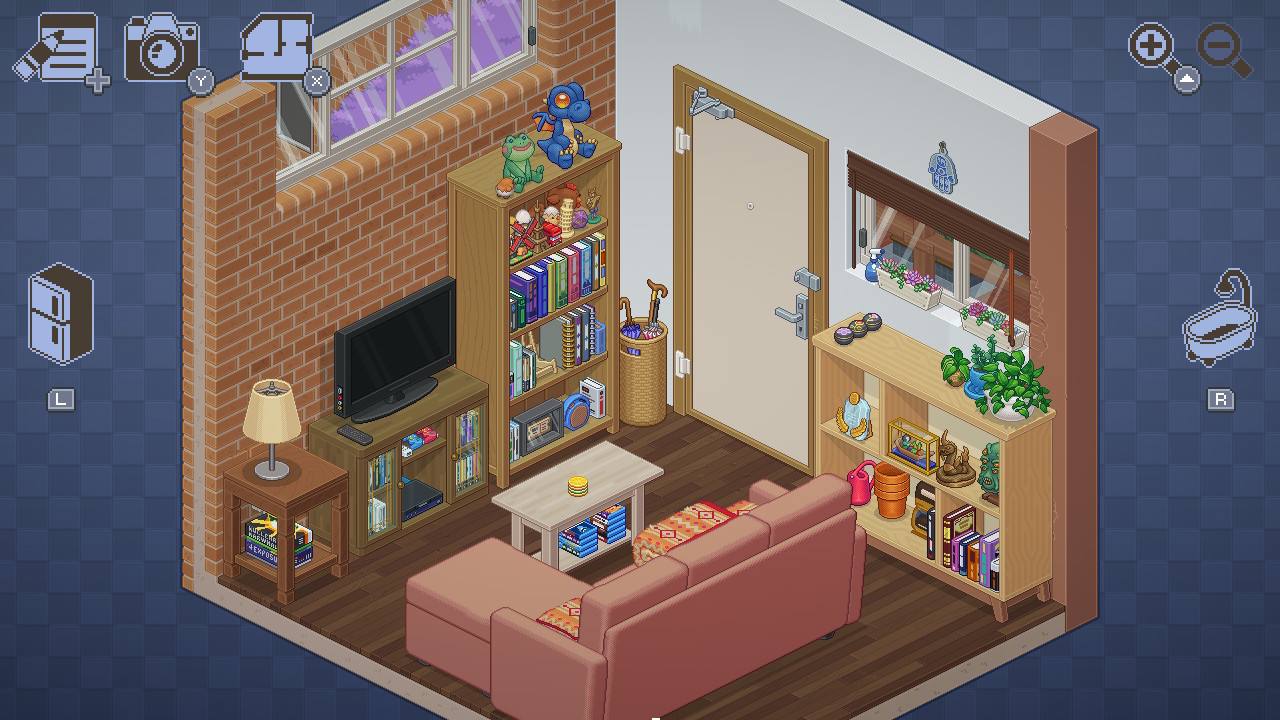
"We like the story being malleable and adaptive to everyone's personal experience. It's something I really like about the game - that people put a lot of themselves into the character."
Wren Brier
That willingness to let players divine their own meaning from objects has led to some inventing narrative developments Witch Beam hadn't originally intended. One example, Dawson says, was players seeing mountaineering equipment and later a cane and pain medication, and assuming she'd hurt herself rock climbing. Others, meanwhile, have come up with alternative interpretations relating to their personal circumstances.
A friend of the pair, Brier notes, saw the cane and assumed she’d hurt herself at work - having done exactly the same in the real world. "But that’s fine!" she smiles. "We like the story being malleable and adaptive to everyone's personal experience. It's something I really like about the game - that people put a lot of themselves into the character."
Like a well-organised box, Unpacking feels full without being overstuffed - indeed, with very few exceptions, Brier and Dawson say they managed to fit in just about everything they wanted to. The game's popularity (100,000 copies sold in the first ten days) has understandably led to some clamour for DLC, but Witch Beam says it's not in the studio's plans.
"We hit the big beats and the big ideas that we wanted in this game and then finished and wrapped it up. And people have been saying 'Please make more levels;, but I'm not sure what exactly they want," Dawson says. "We’ve told the story we had to tell," Brier says, adding that she wouldn't necessarily be opposed to working alongside another narrative designer in the future, but that it would be a sequel rather than an expansion.
"And if it were to happen, it would be pretty far off because I'm very tired and I want to make something that's not Unpacking!" she laughs. Naturally, there's still the odd bit of essential maintenance to do, but otherwise the two have surely earned the right to put their feet up for a while and admire their handiwork.
This feature first appeared in Edge magazine issue 368. For more fantastic in-depth features and interview, you can pick up a single issue over at Magazines Direct or subscribe.

Chris is Edge's former deputy editor, having previously spent a decade as a freelance critic. With more than 15 years' experience in print and online journalism, he has contributed features, interviews, reviews and more to the likes of PC Gamer, GamesRadar and The Guardian. He is Total Film’s resident game critic, and has a keen interest in cinema. Three (relatively) recent favourites: Hyper Light Drifter, Tetris Effect, Return Of The Obra Dinn.


